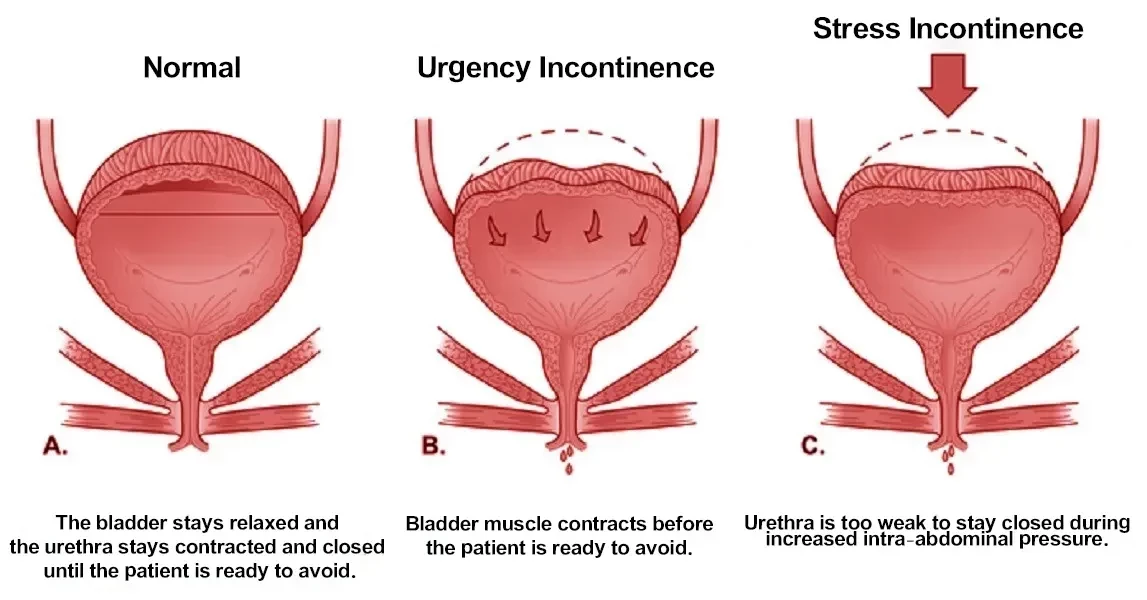
Urinary incontinence is a medical condition characterized by the involuntary loss of urine, leading to an inability to control urinary function properly. It can vary in severity and is more common in women than in men.
Here's an overview of urinary incontinence, including its causes, symptoms, prevalence, diagnosis, treatment, and prognosis:
– Prevalence
Urinary incontinence is a common condition, and its prevalence increases with age. It affects people of all genders but is more common in women, particularly during and after pregnancy, childbirth, and menopause. The prevalence varies depending on the type of incontinence and other factors, but it is estimated to affect millions of individuals worldwide.
Urinary incontinence can result from various underlying causes, including:
Most cases of uterine cancer are associated with an imbalance between estrogen and progesterone, with an excess of estrogen. Estrogen can stimulate the growth of the endometrial lining, increasing the risk of cancer over time.
Weak or damaged pelvic floor muscles, which support the bladder and urethra, can lead to stress incontinence (leakage during physical activity or when sneezing or coughing).
Overactive bladder muscles can cause urge incontinence, leading to a sudden and strong urge to urinate, followed by leakage.
Nerve damage from conditions such as diabetes, multiple sclerosis, or injury can disrupt the normal signals between the bladder and brain, leading to incontinence.
Hormonal changes during menopause can lead to decreased estrogen levels, which may contribute to incontinence in some women.
In men, an enlarged prostate gland (benign prostatic hyperplasia) can obstruct the urethra and cause urinary incontinence.
Some medications, such as diuretics, can increase urine production and contribute to incontinence.
Conditions like urinary tract infections, chronic constipation, and certain neurological diseases can lead to incontinence.
The main symptom of urinary incontinence is the involuntary loss of urine. The specific symptoms and types of incontinence include:
Leakage of urine during activities that increase abdominal pressure, such as coughing, sneezing, laughing, or lifting heavy objects.
Sudden, intense urges to urinate, often followed by involuntary leakage before reaching the toilet.
Frequent dribbling or continuous leakage due to an inability to empty the bladder fully.
Difficulty reaching the toilet in time due to physical or cognitive limitations, such as mobility issues or dementia.
Diagnosing urinary incontinence typically involves:
Discussing symptoms, patterns of incontinence, and potential contributing factors.
A physical examination may include a pelvic exam in women.
A urine sample may be analyzed to check for signs of infection or other abnormalities.
Keeping a record of fluid intake, urinary frequency, and episodes of incontinence can provide valuable information.
In some cases, imaging studies like ultrasound or urodynamic testing may be performed to assess bladder function and urinary flow.
Treatment options for urinary incontinence depend on the underlying cause and type of incontinence but may include:
These may include dietary changes, fluid management, weight loss, and pelvic floor exercises (Kegel exercises).
Medications can help manage overactive bladder symptoms and reduce urgency and leakage.
Techniques such as bladder training and biofeedback can help improve bladder control.
In some cases, devices like pessaries (for women with pelvic organ prolapse) or catheters may be used.
Surgical procedures may be considered for certain types of incontinence, especially when conservative treatments are ineffective. Tapes are inserted to control incontinence.
– Prognosis
The prognosis for urinary incontinence varies depending on its underlying cause, type, and the effectiveness of treatment. Many people can experience significant improvement or complete resolution of their symptoms with appropriate management. Lifestyle modifications, pelvic floor exercises, and medications are often successful in managing incontinence. However, in some cases, especially those involving underlying medical conditions or severe anatomical issues, more invasive treatments like surgery may be necessary.


 Whatsapp Now
Whatsapp Now +918106688026
+918106688026